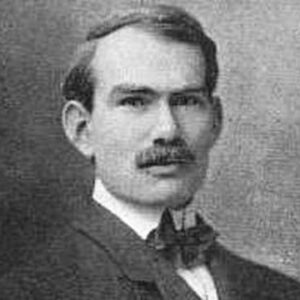Lee de Forest, also regarded as the “Father of Radio,” was an American inventor. He designed the Audion vacuum tube, which could amplify a weak signal and make it louder. He was a prolific investor with over 180 patents to his name. It was this invention that set the stage for subsequent electronic communications breakthroughs. Without this man’s brilliant mind, radio broadcasting, television, and cinema would not have been possible. He was a forerunner of the electronic age and was instrumental in bringing sound to previously silent movies. He had been attracted by science and technology since he was a child, and he was blessed with a curious and creative mind. His father had hoped that his son would follow in his footsteps as a Congregational Church minister. Lee, on the other hand, had other ideas. He began inventing things when he was a teenager, despite the fact that he had no idea how far his ingenuity would carry him. Despite his very creative and clever mind, he was a lousy businessman who was unable to benefit financially from his own ideas. He was a talented creator, without a doubt, but he had a tumultuous personal life. He married four times, was the subject of various litigation, and was even charged with mail fraud, though he was eventually exonerated.
Childhood and Adolescence
Henry Swift de Forest and Anna Robbins were his parents. His father was the President of Talladega College and a Congregational Church clergyman.
He has always been fascinated by machinery and has kept up with technological breakthroughs since he was a child. He began building and constructing new machines when he was barely in his teens, a brilliant and creative young man.
His father had hoped that he would follow in his footsteps and become a priest, but the young boy preferred to pursue a career in science. Before enrolling in the Sheffield Scientific School at Yale University in Connecticut in 1893, he attended Mount Hermon School.
In 1896, he obtained his bachelor’s degree, and in 1899, he received his Ph.D. in physics. His dissertation on radio waves, “Reflection of Hertzian Waves from the Ends of Parallel Wires,” was conducted under the supervision of theoretical physicist Willard Gibbs.
Career of Lee de Forest
He worked for the Chicago-based Western Electric Company. He started off in the dynamo department, but later moved on to designing telephone equipment. During this time, he began to undertake his own research in his spare time, developing an electrolytic Hertzian wave detector.
He started his own company, the De Forest Wireless Telegraph Company, in 1902, to sell radio equipment he had built. He wanted to profit from his ideas by creating his own business, but he was duped by his own partners, and the company went bankrupt in 1906.
In 1906, he invented the Audion, an electrical amplifier vacuum tube. It was the first electrical gadget capable of converting a weak signal into a stronger one. He had no idea, though, how powerful his brilliant innovation was at the time.
He created a two-electrode diode vacuum tube detector, which was a variation of the Fleming valve, which had been invented two years before. He subsequently created a three-electrode device that was a superior electromagnetic wave detector. In 1908, this invention was granted a patent.
Following the loss of his first business, he established the De Forest Radio Telephone Company. By 1909, his company had also begun to crumble, owing to his dishonest associates. In 1912, he was even charged with murder, but he was acquitted.
From the experimental radio station 2XG in New York City, he transmitted the first radio ads for his own wares in 1916. He also broadcast the presidential election results for Charles Evans Hughes and Woodrow Wilson.
In 1919, he invented a sound-on-film technology for which he was granted a patent. It was known as the De Forest Phonofilm method. He explored alternative sound film techniques over the next four years before establishing his De
Forest Phonofilm Company in 1922 and demonstrating Phonofilm to the press in 1923.
The Phonofilm method recorded stage acts, talks, and music concerts by synchronizing sound straight onto film. Sound-on-film devices were first used in Hollywood in the late 1920s.
Major Projects of Lee de Forest
His creation of the Audion, the first triode vacuum tube for amplifying high-frequency radio signals, ushered in the electronic communication era. This was the invention that allowed for many more advancements in the area, garnering him the title of “Father of Radio.”
Achievements & Awards
He received the IRE Medal of Honor in 1922 “in appreciation of his creation of the three-electrode amplifier and other achievements to radio.”
In 1946, he was awarded the Edison Medal by the American Institute of Electrical Engineers “for the profound technological and social repercussions of the grid-controlled vacuum tube that he invented.”
Personal History and Legacy
He had four marriages. In February 1906, he married Lucille Sheardown, although the marriage only lasted a few months. In 1907, he married Nora Stanton Barney for the second time. This union resulted in a daughter and lasted until 1911.
He married Mary Mayo in December 1912 and they had one daughter together. In 1930, the couple divorced.
In 1930, he married Marie Mosquini for the fourth and final time. De Forest’s marriage lasted till his death.
At the age of 87, he died in 1961. Despite his accomplishments, he never achieved financial success and died a destitute man.
Estimated Net Worth
The estimated net worth of Lee de Forest is $14 million.


